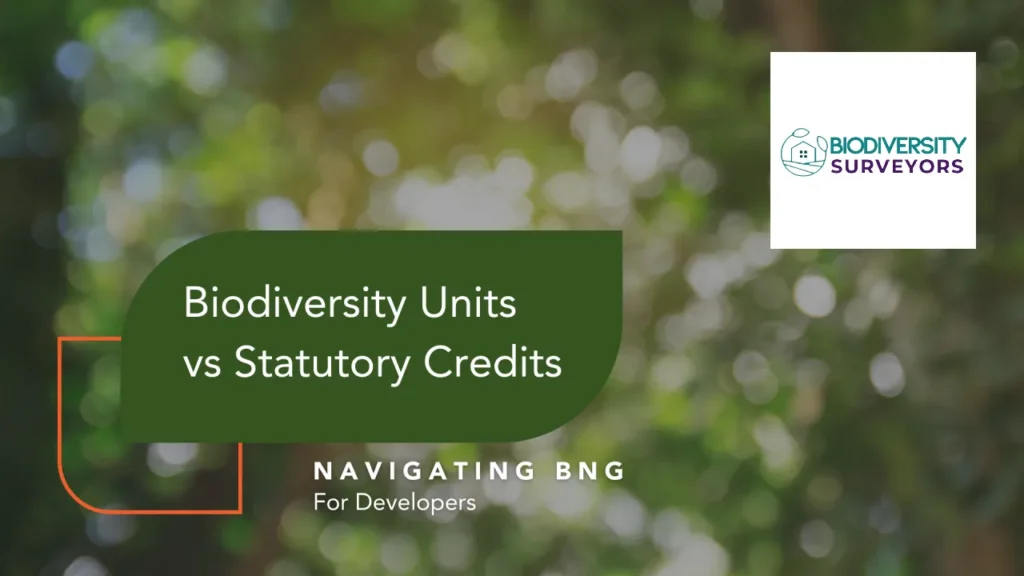Yes, it is now a legal requirement in England for developers to achieve at least 10% biodiversity net gain (BNG) in new developments. Very few developments are exempt from this, such as those which impact less than 25 square metres of on-site habitat or 5 metres of on-site linear habitat or have no more than 9 dwellings across a maximum 0.5 hectares. You may want to ask our advice if you are concerned about any land that is likely to be developed in the near future. Talk to us and we can discuss what else to look out for.
The situation can be very nuanced depending on your geography, land type, and value. A very rough potential revenue estimate for per hectare earnings, spread over 30 years, would be between £60,000 to £300,000.

Yes, it is now a legal requirement for developers to deliver 10% biodiversity net gain (BNG) in new developments in England.
There are limited exemptions, such as developments that impact less than 25 square metres of on-site habitat or 5 metres of on-site linear habitats (e.g. hedgerow) and developments of no more than 9 dwellings on land no larger than 0.5 hectares.


The costs for landowners will vary, but they will likely incur fees for the following matters over different stages of the process:
The main elements you will pay for upfront are the land assessment and calculation of BNG, which together start at around £950.


Biodiversity net gain (BNG) must happen; it’s now a condition for all developments.
From 12th February 2024, all developments must comply with biodiversity net gain (BNG) requirements. These legally binding obligations ensure that developments not only protect but also enhance biodiversity. The BNG requirements apply from the planning permission stage through to the site’s use as a development.
They cover everything from maintaining existing habitats to creating new ones, with the sorts of measures that a developer could take if they were to use an ‘off-the-shelf’ solution to improving and maintaining biodiversity on their site; for example, by using ‘biodiversity credits,’ which are available through the planning process.
Most importantly, the developers must measure the improvement of biodiversity both before and after the development, and demonstrably maintain these improvements over a 30-year period.
After the planning permissions are granted, local planning authorities will oversee compliance; from the 2nd of April, 2024, the same standards apply both to small sites and to development projects of any sort that use up land capacity.
Developers must show that they are improving biodiversity both before and after their developments. They also must demonstrate that they can maintain these sites so that they achieve a net gain in biodiversity.
Ecologists via our organisation work in close conjunction with landowners and developers to establish Habitat Management and Monitoring Plans (HMMPs) that are fully compatible with site plans and achieve a Biodiversity Net Gain.
Existing habitats can often be enhanced, and new habitats can be created to favourable effect. One way to achieve this is to plant wildflower meadows, hedges, and trees. Another largely successful way to achieve this is through extensive planting (as at the Queen Elizabeth Olympic Park in London) and numerous other routes to habitat creation that favour the local condition.
When on-site measures can not yield Biodiversity Net Gain, off-site solutions can be employed (i.e. biodiversity credits). Contact us to learn more.
Property owners can sell Biodiversity Credits while engaging local authorities or brokerages in the process. These credits are accumulated when landowners improve biodiversity on their land.
To earn the credits, property owners must undergo an assessment process using the UK Government’s Biodiversity Metric. They first need to get in touch with local authorities or brokerages to schedule a property survey. The property is then assessed for biodiversity.
Local authorities and brokerages use the results from these assessments to determine “net gain”: a conservation term that describes whether property under development has improved, worsened, or stayed the same in terms of biodiversity.
Your consultant BNG surveyor can help you with the above (including guidance on landscaping to plant wildflower meadows, hedgerows, trees, etc.).
